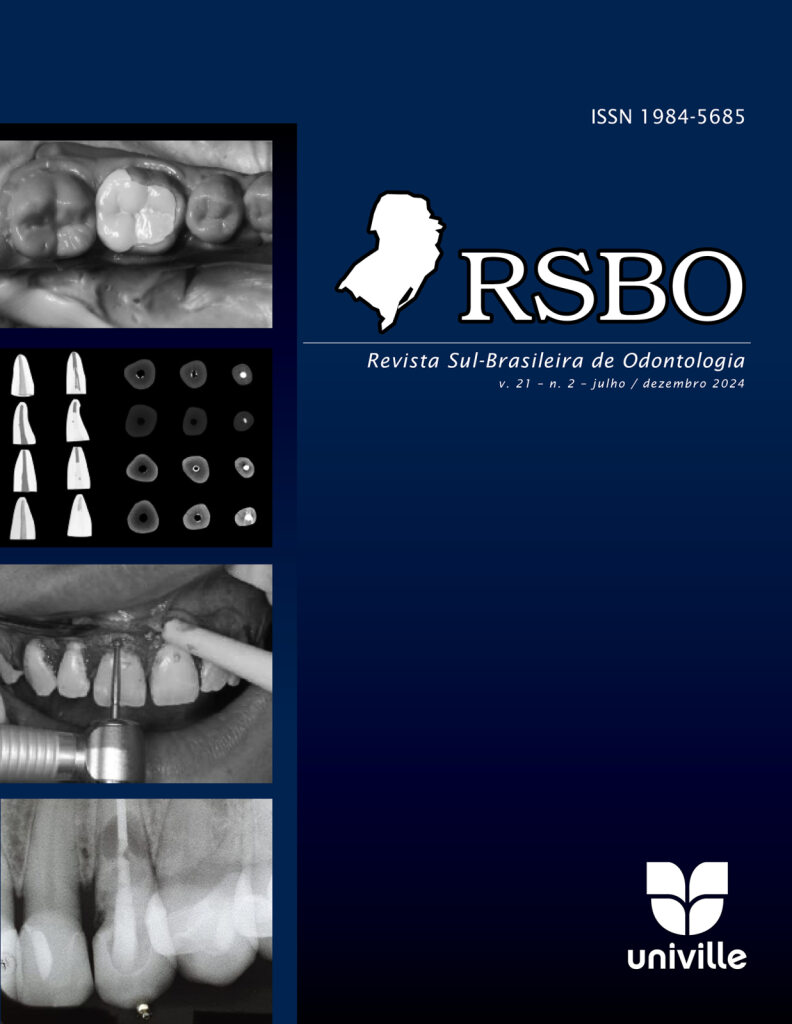Radiopacity of bulkfill resin composites using digital radiography system
DOI:
https://doi.org/10.21726/rsbo.v21i2.2514Palavras-chave:
radiopacity; digital dental radiography; bulkfill resin composites.Resumo
Restorative material radiopacity is a desired feature in Dentistry. A restorative material that presents low radiopacity makes difficult the diagnosis of carious lesions and the evaluation of the contour and excess of the restorative material because marginal steps cannot be detected. Objective: The objective of this study was to evaluate the radiopacity of ten bulkfill resin composites and a microhybrid composite, compared with enamel and dentin, using a complementary metal-oxide semiconductor (CMOS) digital radiographic system. Material and methods: Dental specimens and 4 specimens of each restorative material were made with thicknesses of 2 mm, 3 mm and 4 mm, totaling 132 discs of resin composite. The specimens with the dental fragments, along with an aluminum scale, were X-rayed (70 kVp, 7 mA, 30 cm and 0.40 s) using a Snap Shot CMOS semiconductor receiver. The radiopacity was measured by histogram with the ImageJ program. Statistical analysis was performed using the Kruskal-Wallis test followed by Dunn’s post hoc test. Results: Only Opus Bulkfill Flow and Voco Admira Fusion X-Base showed radiopacity below that of enamel and above that of dentin, with a thickness of 2 mm. At 3 mm and 4 mm, no evaluated material showed radiopacity below that of enamel and that of dentin. Conclusion: It can be concluded that the resin composites showed higher radiopacity with increasing thickness. In the dental market, there are restorative bulkfill resin materials with radiopacity lower than that of dentin.

